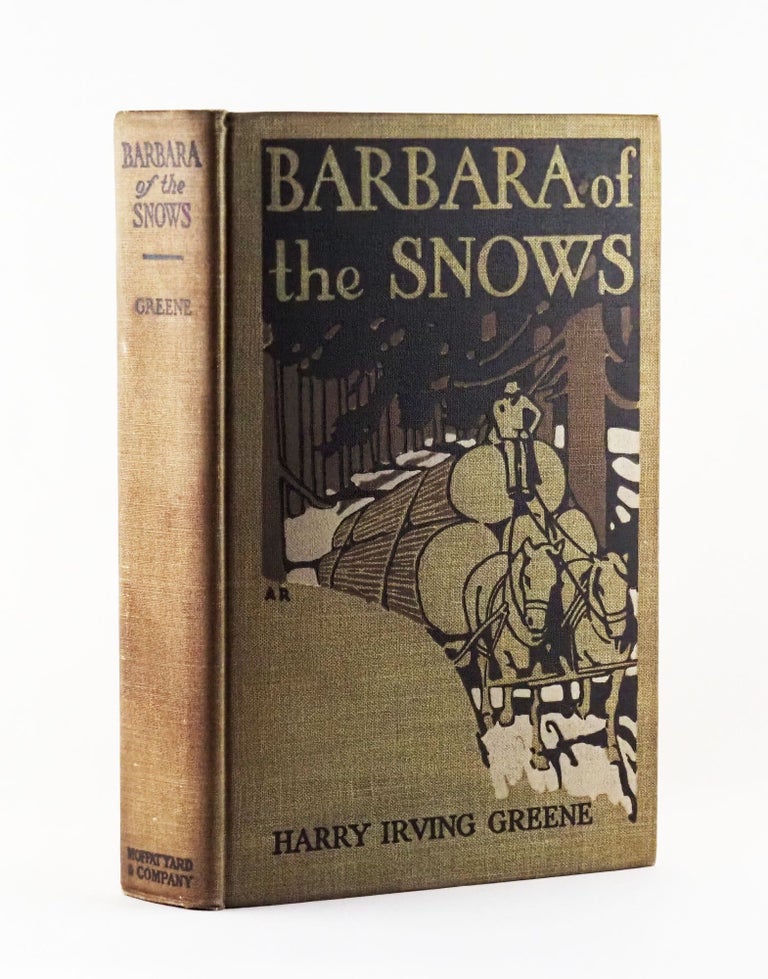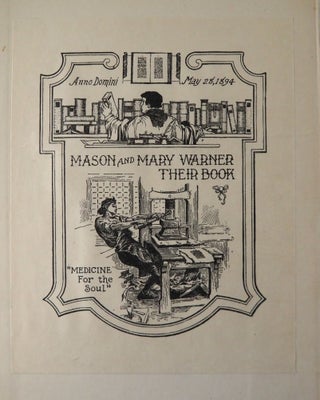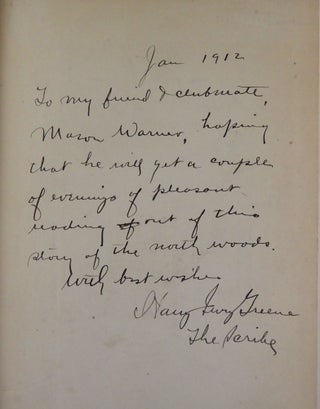Barbara of the Snows
New York: Moffat, Yard and Company, March 1911. 19.5x13cm: 358pp. First Edition, presentation copy signed by author. Illustrated by Harvey T. Dunn, with four illustrated plates. Frontispiece in color depicting Barbara, other three in black and white. Green cloth boards with illustration and black titling to front cover. Lightly sunned and rubbed spine. A beautiful owner bookplate illustrating a woman printer and stating “Mason and Mary Warner Their Book” on the pastedown endpaper. On the front free endpaper is an author signed presentation inscription stating: Jan 1912/To my friend and clubmate, Mason Warner, hoping that he will get a couple of evenings of pleasant reading out of this story of the north woods. With best wishes, Harry Irving Greene/The Scribe. Some toning to back free endpaper and small pen written markings on back endpaper. Housed in a black slipcase. Near Fine. Scarce.
Harry Irving Greene was a prominent working journalist, poet, and writer in Chicago during the early 20th century. The settings for both Barbara of the Snows and his first novel, Yzondé of the Wilderness, demonstrate his love for travel and camping in the unsettled lands of North America (Editor & Publisher, Volume 52, Issue 1: 1919). Greene also wrote short stories for a number of magazines including The Red Book Magazine, Adventure, and Frank Leslie’s Popular Monthly. Greene and Mason Warner, to whom the book is inscribed, were both members of the influential Press Club of Chicago, referenced in the inscription. Warner was in the advertising business where he was Vice President of the Snitzler-Warner Co., and eventually the co-owner (then renamed Mason Warner, Co.) with his wife Mary C. Warner, as stated in Reports of the United States Board of Tax Appeals (Vol. 16, Mabel M. Owen reporter, United States Government Printing Office, Washington: 1930).
The Press Club of Chicago was a club for journalists and started specifically for newspapermen in 1880. The story goes that Samuel Clemens, who came to Chicago in late 1879, invited some 50 reporters to an all-night party and then questioned their lack of a press club like the one established in New York. The Press Club of Chicago was put together shortly after and began regular meetings in January 1880. The membership grew rapidly, boasting the largest membership during the height of the press clubs between 1900 to 1930. Press clubs which began popping up in the late nineteenth century were started for networking, socializing, offering support, professional development, and perhaps most importantly to “legitimize the journalism profession, an occupation that was equated with keeping company with unsavory characters and peeking into keyholes.” (The Chicago Press Club: The Scoop Behind The Front Page, by Richard Digby-Junger).
Price: $250.00
Item #10032



